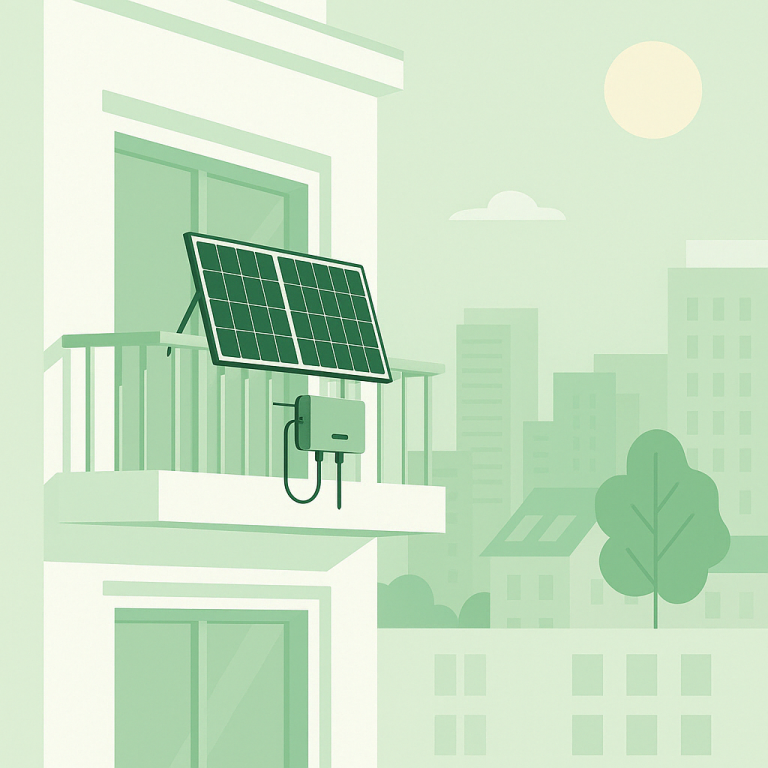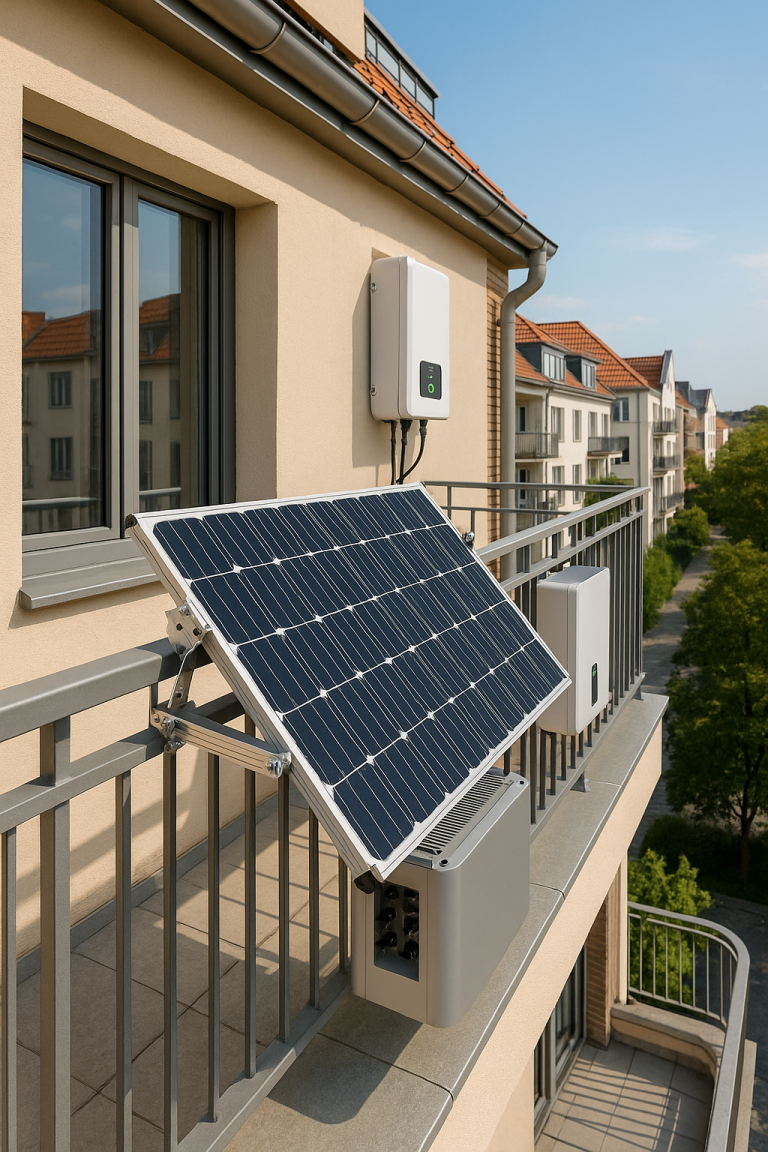1. Introduction: Why Hybrid Solar Systems Are Ideal for Small Businesses
With rising energy costs, small businesses across Europe are increasingly turning to renewable energy sources to reduce their energy bills, enhance their sustainability efforts, and ensure reliability during power outages. Hybrid solar systems, which combine solar panels with battery storage and the grid, have emerged as the perfect solution for these businesses.
Not only do hybrid systems allow businesses to generate and store their own clean energy, but they also offer flexibility, cost savings, and energy security — three vital components for any business looking to thrive in the modern economy.
In this article, we will explore 5 real-world use cases of hybrid solar systems in small businesses across Europe, showing how they help companies reduce operational costs, improve energy efficiency, and increase resilience.
2. What Is a Hybrid Solar System?
A hybrid solar system combines solar power generation with battery storage and grid connection. It provides a flexible energy solution that allows businesses to store excess solar energy for use during off-hours or periods of low sunlight, while also having the option to draw power from the grid when necessary.
Key components of a hybrid solar system:
- Solar panels – Capture energy from the sun
- Inverter – Converts DC to AC power for business use
- Battery storage – Stores excess energy for later use
- Grid connection – Provides backup when solar power and battery storage are insufficient
- Energy management system – Optimizes energy use and manages power distribution
The advantage of this system is that it allows businesses to maximize their solar investment by making use of stored energy when needed, minimizing reliance on the grid, and ensuring continuity of operations during grid outages.
3. Key Benefits of Hybrid Solar Systems for Small Businesses
Hybrid solar systems offer several advantages for small businesses, especially those looking to reduce costs and increase energy efficiency:
✅ Cost Savings
Hybrid systems allow businesses to generate their own power, which can significantly reduce energy bills. Businesses can also avoid peak-hour electricity charges by using stored energy during times when grid power is most expensive.
✅ Energy Independence
By relying on solar power and battery storage, businesses can reduce their dependence on the grid. This is particularly important for businesses located in regions with frequent power outages or unstable grids.
✅ Environmental Impact
Hybrid systems are an eco-friendly energy solution, reducing the carbon footprint of the business. By generating clean, renewable energy, businesses can promote sustainability and attract environmentally-conscious customers.
✅ Backup Power
The battery storage component ensures that businesses have a reliable power supply even during power outages. This is essential for businesses that need continuous power to avoid losses, such as retail stores or food services.
✅ Scalability
Hybrid solar systems are easily scalable. As your business grows and energy demands increase, you can simply add more solar panels or battery storage to meet your needs.
4. Use Case #1: Café or Restaurant – Cutting Energy Costs While Staying Green
For small cafés or restaurants, energy costs often account for a significant portion of operating expenses, especially for refrigeration, cooking equipment, and lighting. A hybrid solar system is an excellent solution for reducing energy costs and achieving sustainability goals.
How it works:
- Solar panels power lights, kitchen equipment, and air conditioning during the day.
- Battery storage stores excess solar energy for nighttime use when the restaurant is closed.
- The grid serves as a backup, ensuring continuous power during cloudy days or in case of system maintenance.
Benefits:
- Reduces energy bills by utilizing solar energy during the day.
- Provides backup power during power outages, ensuring uninterrupted service.
- Promotes sustainability, making the restaurant more attractive to eco-conscious customers.
Example:
A café in southern Spain can save up to 40% of its annual energy costs by using a hybrid solar system with 5kW solar panels and a 10kWh battery bank.
5. Use Case #2: Retail Store – Maximizing Energy Efficiency and Backup Power
For retail stores, especially those that rely on refrigeration, lighting, and point-of-sale systems, energy efficiency is crucial. A hybrid solar system offers an efficient solution to reduce energy expenses while ensuring that the business operates smoothly, even during grid outages.
How it works:
- Solar panels provide power for lights, refrigerators, and security systems.
- Battery storage is used to store solar energy for nighttime use and backup during outages.
- If solar production is insufficient, the store can draw energy from the grid or rely on battery storage.
Benefits:
- Decreases monthly electricity bills by generating solar energy during daylight hours.
- Ensures business continuity during power failures, especially during peak shopping hours.
- Reduces reliance on the grid and cuts down on utility costs.
Example:
A small retail store in Germany with a hybrid solar system can cut down its electricity bill by up to 30% annually, with excess energy stored in batteries used for nighttime operations.
6. Use Case #3: Farm or Agricultural Business – Offsetting Seasonal Energy Fluctuations
For farms or agricultural businesses, energy needs fluctuate with the seasons, with higher electricity demands during planting and harvesting seasons. A hybrid solar system allows farms to generate power when it’s abundant and store energy for times when it’s less sunny.
How it works:
- Solar panels power irrigation systems, greenhouses, and equipment during sunny days.
- Battery storage holds excess energy for the winter or rainy months when solar generation is lower.
- Grid connection ensures the farm has power during times when solar and battery energy are insufficient.
Benefits:
- Offsets high energy costs during peak agricultural seasons.
- Backup power ensures that critical systems like irrigation and refrigeration continue running during grid failures.
- Helps farms reduce their carbon footprint by using renewable solar energy.
Example:
A farm in France with a hybrid solar system is able to cut electricity costs by 50% by relying on solar energy and using the battery to store power for the off-season.
7. Use Case #4: Small Office – Powering Office Equipment with Solar and Battery Backup
For small offices, hybrid solar systems provide a way to cut energy costs while ensuring that office equipment like computers, printers, and lights continue running even when the grid goes down.
How it works:
- Solar panels generate power for the office’s equipment during daylight hours.
- Battery storage keeps the lights and equipment running during the night and in case of a power outage.
- The grid provides backup power when both solar and battery systems are exhausted.
Benefits:
- Cost savings on electricity bills by using solar power during the day.
- Provides reliable backup power during work hours or after office hours.
- Contributes to the office’s green energy initiatives.
Example:
A small business office in the UK can save 20–25% annually on energy costs with a 3kW hybrid solar system paired with a 5kWh battery.
8. Use Case #5: Warehouse or Distribution Center – Solar-Powered Operations for Large Facilities
Large commercial spaces like warehouses or distribution centers have high energy needs due to lighting, ventilation, and equipment use. A hybrid solar system can reduce these costs and provide backup power for operations.
How it works:
- Solar panels provide power to lighting, conveyors, and refrigeration units.
- Battery storage stores excess energy during the day for nighttime operations.
- If solar production is insufficient, energy can be drawn from the grid or stored batteries.
Benefits:
- Greatly reduces the energy bill for large facilities.
- Backup power ensures continuity of operations in case of grid failure.
- Solar energy allows for more predictable energy costs.
Example:
A warehouse in Italy with a hybrid solar system can reduce electricity costs by up to 40%, with backup energy to cover night shifts and emergency operations.
9. How to Calculate the ROI of Hybrid Solar Systems for SMEs
Calculating the return on investment (ROI) for hybrid solar systems is crucial for small businesses to determine the financial benefits.
ROI Calculation Formula:
- Initial investment (cost of solar panels, battery storage, and installation)
- Annual savings (reduced energy bills, reduced grid reliance, etc.)
- Payback period = Initial Investment / Annual Savings
Most small businesses see a payback period of 4–7 years, depending on the system size and local energy costs. After this period, businesses can benefit from free solar energy.
10. Tips for Installing Hybrid Solar Systems for Small Businesses
- Assess your energy needs: Understand your peak energy usage to select the right solar system size.
- Choose quality components: Ensure the batteries, inverters, and solar panels are from reputable manufacturers.
- Consider future expansion: Opt for scalable systems that can grow with your energy needs.
- Seek professional installation: Ensure the system is properly installed and compliant with local regulations.
11. Conclusion: Why Hybrid Solar Systems Are the Future for Small Businesses in Europe
Hybrid solar systems offer small businesses in Europe the opportunity to reduce their energy bills, improve energy efficiency, and ensure reliable power supply. Whether you’re running a café, a retail store, or a warehouse, these systems provide a flexible, scalable, and sustainable solution.
With government incentives and falling installation costs, hybrid solar systems are becoming a key tool for small businesses to remain competitive, eco-friendly, and cost-effective in today’s energy market.




